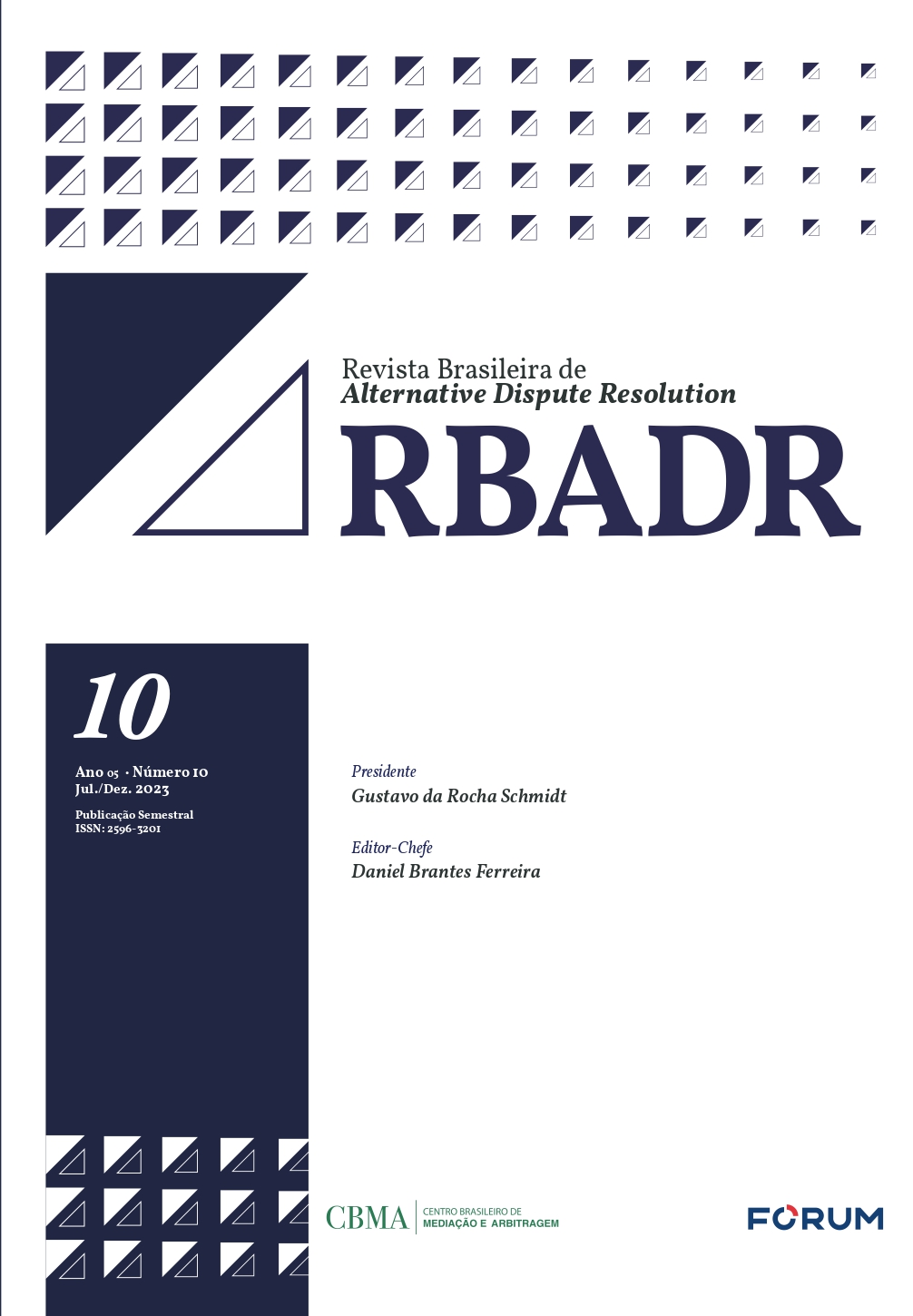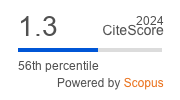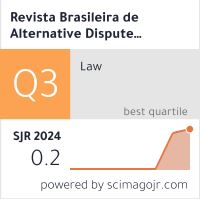A Study on Resolving Disputes in Trial Courts Through online Dispute Resolution in India
Keywords:
Trial Court, Online Justice Delivery, Litigant, GovernmentAbstract
Byzantine methods and cumbersome process clog the approximately 672 district courts and their subordinate courts, which is the first door to access for violation of rights for the common citizenry. India is an emerging economy slated to become one of the topmost economies in the world in future years. Having an overwhelmingly large population of smartphone users, which is almost 55% of the population with an average age of population at 28, it can only be estimated that the numbers will grow exponentially. One of the benchmarks for tracking the growth of a democratic polity along with emerging markets is the quality of justice delivery system. The justice delivery system in India with the courts being in the eye of the storm, are often harshly criticised for working up in a snail’s pace the main reasons being paucity of infrastructure and judges and a burgeoning population of litigants. The last reason is substantiated by the fact that majority of people repose their constant faith in institutional adjudication of disputes. So the question is how dispute resolution can be time bound? Now considering the above facts and putting them in perspective, i.e., a young working population with smart phones having access to justice to resolve their personal or professional feuds, or be it a company, body of persons, or the biggest litigant of all, the government, if in certain criminal, civil proceeding, can settle the dispute having an online access to court process it will help immensely in settling disputes and claims on time. The authors herein propose to suggest measures as to how to implement the procedure and process to address and effectively implement the online mechanism in trial courts involving all concerned and interest parties and usher a new vista in justice delivery system.
References
Richard Susskind, Online Courts and the Future of Justice (OUP 2019) https://njdg.ecourts.gov.in/hcnjdgnew/
ODR – The Future of Dispute Resolution in India, VIDHI Centre for Legal Studies
Inefficiency and Judicial Delay: New Insights from Delhi High Court, March 2017 available at www.vidhilegalpolicy.in
https://www.scconline.com/blog/post/2021/02/07/evolution-of-adr-mechanisms-in-india/ https://pib.gov.in/PressReleaseIframePage.aspx?PRID=1710900
https://data.worldbank.org/indicator/IT.NET.USER.ZS?locations=IN https://vidhilegalpolicy.in/research/the-future-of-dispute-resolution-in-india/
https://ecommitteesci.gov.in/vision-document-for-phase-iii-of-ecourts-project/
United Nations Commission on International Trade Law, ‘UNCITRAL Technical Notes on Online Dispute Resolution’ (2017)
Vani S. Kulkarni, Veena S. Kulkarni & Raghav Gaiha, “India’s Judiciary and the Slackening Clog of Trust”, The Hindu, 9 May, 2022
Soma Dey Sarkar, et al., “Administration of Civil Justice and Its Glorious Uncertainty in the Indian Legal System: A Long, Expensive Journey to Justice”, Advancing Civil Justice Reform and Conflict Resolution in Africa and Asia: Comparative Analyses and Case Studies, 93, Elijah Tukwariba Yin and Nelson F. Kofie (Ed.) [IGI Global, Hershey, USA]
Harshit Agarwal and Poulomi Sen, “Social Media-Tion: A Constructive Approach to Dispute Resolution?”, Revista Brasileira de Alternative Dispute Resolution - RBADR, Vol. 3 No. 6, pp. 2021., https://rbadr.emnuvens.com.br/rbadr/article/view/143, accessed on 05.05.2023.
Olga N. Tsiptse, “EU Data Protection Regulation and How It Affects Arbitration and ADR-ODR”, Revista Brasileira de Alternative Dispute Resolution - RBADR, Vol. 3 No. 5, pp. 159-194, 2021. https://rbadr.emnuvens.com.br/rbadr/article/view/104, accessed on 05.05.2023.
Access to Justice Survey, 2015-16, Daksh, www.dakshindia.org
Annual Reports, 2019-2020, Ministry of Law and Justice, Government of India, https://lawmin. gov.in/documents/annualreports
Bhatia, G. (2021), The Past is a Foreign Country, The Transformative Constitution, p. xxxi, HarperCollins Publishers India
Gyanendra Kumar Sharma and Pranav Vashishtha, Bottlenecks in Civil Justice Administration before the Courts and the Remedies thereof: A Research, Uttarakhand Judicial and Legal Review, p. 3
Hasit B. Seth, Adhering to Statutory Timelines: A Step towards Better Case Management of Civil Trials, 2021 SCC Online Blog Ex. 6, https://www.scconline.com/blog/post/2021/01/28/adhering-to-statutory-timelines-a-step-towards-better-case-management-of-civil-trials/
Imran Mohd. Khan, Alternative Mode of Access to Justice, https://ujala.uk.gov.in/files/ch10_2.pdf
India’s Pending Court Cases in Rise: In Charts, September 29, 2020, https://www.bloombergquint.com/law-and-policy/indias-pending-court-cases-on-the-rise-in-charts
India Justice Report: Ranking States on Police, Judiciary, Prisons and Legal Aid, October 2019, https://www.tatatrusts.org/upload/pdf/overall-report-single.pdf
Inefficiency and Judicial Delay: New Insights from the Delhi High Court, March 2017, www.vidhilegalpolicy.org
Jeffery Falt, Congestion and Delays in Asia’s Courts, Pacific Basin Law Journal, Vol. 4:90, p. 107
Judith Resnik (1986), Failing Faith: Adjudicatory Procedure in Decline, University of Chicago Law Review, 53, p. 494
Madan B. Lokur, What is Stopping Our Justice System from Tackling the Pending before Courts? 12 May, 2021, https://thewire.in/law/india-judiciary-pending-cases-supreme-court
Marc Galanter. (2008). Fifty Years On. In B.N. Kirpal (Ed.), Supreme but not Infallible: Essays in Honour of the Supreme Court of India (pp. 59-61). Oxford University Press
Pragadeeswaran and Udayavani, A Study on Delay in Civil Proceeding, International Journal of Pure and Applied Mathematics, 2018, Vol. 120 No. 5, p. 2571
Vandana Ajay Kumar, Judicial Delays in India: Causes and Remedies, Journal of Law. Policy and Globalization, Vol. 4, 2012, p. 16
Velacharu Narayana Rao. (1990). Courts and Lawyers in India: Images from Literature and Folklore. In Y.K. Malik and D.K. Vajpeyi (Eds.), Boeings and Bullock-Carts: Studies in Change and Continuity in Indian Civilization (p. 196). Chanakya Publications
th aw Commission Report on Reform on Judicial Administration, 1958, Vol. 1, Ministry of Law and Justice, Government of India
th Law Commission Report on Code of Civil Procedure (1908), 1964, Ministry of Law and Justice, Government of India
th Law Commission Report on Code of Civil Procedure (1908), 1973, Ministry of Law and Justice, Government of India
th Law Commission Report on Delay and Arrears in Trial Courts, 1978, Ministry of Law and Justice, Government of India
th Law Commission Report on High Court Arrears-A Fresh Look, 1988, Ministry of Law and Justice, Government of India
nd Law Commission Report on Need for Justice Dispensation through ADR etc, 2009, Ministry of Law and Justice, Government of India
th Law Commission Report on Arrears and Backlog: Creating Additional Judicial (Wo)manpower, 2014, Ministry of Law and Justice, Government of India.
Downloads
Published
Issue
Section
License
Copyright (c) 2023 Revista Brasileira de Alternative Dispute Resolution - Brazilian Journal of Alternative Dispute Resolution - RBADR

This work is licensed under a Creative Commons Attribution 4.0 International License.
No royalties or other compensation shall be due for the publication of the works.
The opinions expressed by the authors of the articles and reviews are their sole responsibility.









